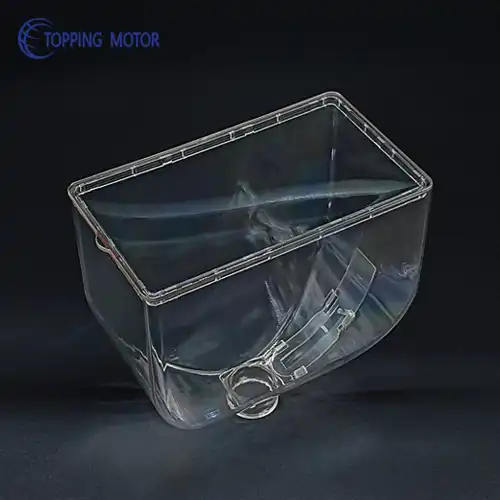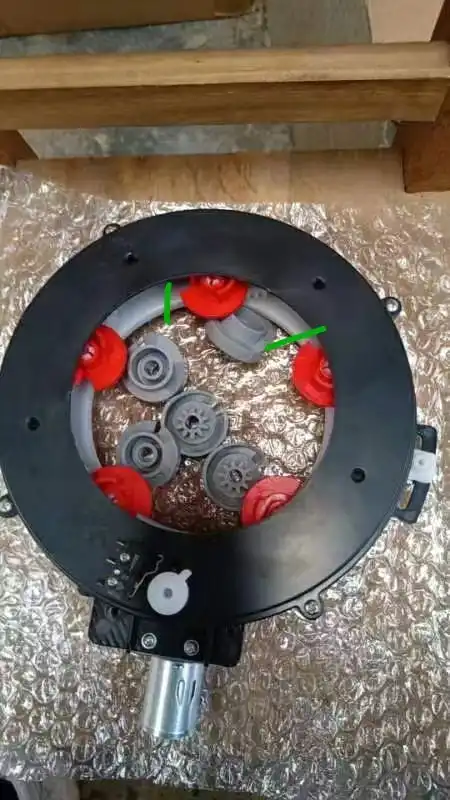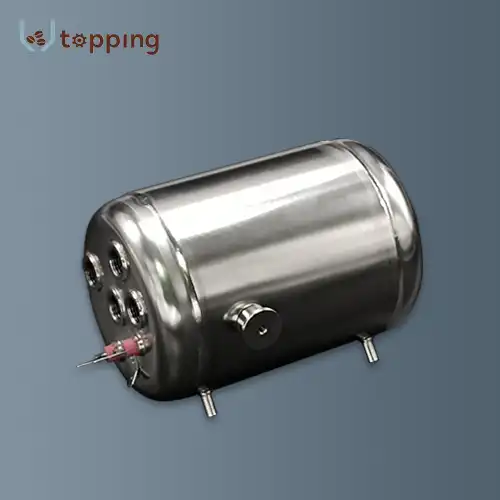Why Choose Food-grade Plastic Coffee Bean Hopper?
2024-12-24 16:33:50
Safety And Health
When it comes to choosing a coffee bean hopper, safety and health considerations should be at the forefront of your decision-making process. Food-grade plastic has emerged as a popular choice for coffee bean hoppers due to its non-toxic nature and safety profile. This type of plastic is specifically designed and tested to be safe for food contact, ensuring that no harmful chemicals leach into your coffee beans during storage.
Food-grade plastics are regulated by various health and safety organizations, including the U.S. Food and Drug Administration (FDA) and the European Food Safety Authority (EFSA). These agencies set strict standards for materials that come into contact with food and beverages, ensuring that they do not release harmful substances or affect the quality of the product they contain.
One of the key advantages of food-grade plastic is its resistance to chemical reactions. Unlike some other materials, food-grade plastic does not react with the oils present in coffee beans. This is crucial because coffee beans contain various oils that are essential to their flavor profile. By using a food-grade plastic hopper, you can be confident that these oils will not be altered or contaminated, preserving the natural taste and aroma of your coffee.
Moreover, food-grade plastic is designed to withstand a wide range of temperatures without degrading or releasing harmful substances. This is particularly important for coffee bean hoppers, as they may be exposed to varying temperatures depending on their location and the ambient conditions of your coffee-making environment.
It's worth noting that not all plastics are created equal. When choosing a plastic coffee bean hopper, it's essential to look for those specifically labeled as food-grade. These hoppers are typically made from materials like high-density polyethylene (HDPE) or polypropylene (PP), which are known for their safety and durability in food applications.
Cost-Effectiveness
In addition to their safety benefits, food-grade plastic coffee bean hoppers offer significant cost advantages. When compared to hoppers made from materials like glass or stainless steel, plastic hoppers are generally more affordable, making them an economical choice for both home users and commercial establishments.
The lower cost of plastic hoppers is primarily due to the material itself and the manufacturing process. Plastic is relatively inexpensive to produce in large quantities, and the molding process used to create plastic hoppers is efficient and cost-effective. This results in lower production costs, which are often passed on to the consumer in the form of more affordable prices.
Despite their lower cost, food-grade plastic hoppers do not compromise on quality or functionality. They are designed to be durable and long-lasting, providing excellent value for money. Many plastic hoppers can withstand the daily rigors of coffee making, including frequent refills and cleaning, without showing signs of wear or degradation.
The cost-effectiveness of plastic hoppers extends beyond the initial purchase price. They are typically easier and less expensive to replace if damaged, compared to their glass or metal counterparts. This can be particularly beneficial in commercial settings where equipment may be subject to more intensive use and occasional accidents.
Furthermore, the lightweight nature of plastic hoppers (which we'll discuss in more detail in the next section) can lead to reduced shipping costs. This is especially relevant for businesses ordering multiple units or for individuals purchasing online.

Lightweight
The lightweight nature of food-grade plastic coffee bean hoppers is another significant advantage that contributes to their popularity. Compared to hoppers made from materials like metal or glass, plastic hoppers are considerably lighter, which offers several benefits in terms of handling, installation, and overall user experience.
The reduced weight of plastic hoppers makes them much easier to handle during routine tasks such as refilling beans or cleaning. This can be particularly beneficial in busy commercial environments where these tasks need to be performed frequently and efficiently. The lighter weight reduces the physical strain on staff, potentially contributing to improved workplace ergonomics and reduced risk of accidents or injuries related to handling heavy equipment.
Installation of plastic hoppers is also generally easier due to their lightweight nature. Whether you're setting up a new coffee machine or replacing an old hopper, the process is simpler and often quicker with a plastic model. This can be especially advantageous for home users who may not have experience with installing coffee equipment or for businesses looking to minimize downtime during equipment changes or upgrades.
The lightweight characteristic of plastic hoppers also contributes to the overall portability of coffee-making equipment. For mobile coffee businesses or those that frequently rearrange their setup, having a lighter hopper can make a significant difference in the ease of moving and repositioning the entire coffee machine.
It's important to note that despite being lightweight, food-grade plastic hoppers are designed to be sturdy and durable. They are engineered to withstand the weight of coffee beans and the vibrations associated with the grinding process, ensuring reliable performance over time.
Transparency
One of the most practical advantages of food-grade plastic coffee bean hoppers is their transparency. Many plastic hoppers are made from clear or translucent materials, allowing users to easily see the level of coffee beans inside. This visual accessibility offers several benefits that contribute to a smoother coffee-making process.
The ability to quickly assess the bean level in the hopper is crucial for maintaining a consistent coffee supply. In busy coffee shops or restaurants, this visual cue allows staff to anticipate when a refill will be needed, preventing unexpected shortages during peak hours. For home users, it eliminates the need to open the hopper to check the bean level, reducing the frequency of exposing the beans to air and potentially compromising their freshness.
Transparency also aids in quality control. It allows users to visually inspect the condition of the beans, making it easier to spot any issues such as clumping due to moisture or the presence of foreign objects. This can help maintain the quality of the coffee and prevent potential damage to the grinder.
Moreover, the clear design of plastic hoppers can contribute to the overall aesthetic of your coffee setup. Many coffee enthusiasts appreciate being able to see the beans, as it adds to the visual appeal and can spark conversations about different bean varieties or roasts.
Some plastic hoppers feature graduated markings on the side, allowing for more precise measurement of bean quantities. This can be particularly useful for maintaining consistency in commercial settings or for home users who like to precisely control their coffee-to-water ratios.
Coffee Bean Hopper For Sale
When considering a coffee bean hopper, it's crucial to choose one that's compatible with various coffee bean types to ensure versatility in your coffee-making process. The Topping Motor coffee bean hopper offers this flexibility, accommodating different types of coffee beans to suit diverse preferences and brewing styles. If you're in the market for a new coffee bean hopper or looking to upgrade your current setup, it's important to consider factors such as material quality, capacity, and ease of use. For those interested in exploring options from reputable coffee bean hopper manufacturers, you can reach out to sales@huan-tai.org for more detailed information and guidance on selecting the right hopper for your needs.
References
1. U.S. Food and Drug Administration. (2023). "Food Contact Substances (FCS)."
2. European Food Safety Authority. (2022). "Food Contact Materials."
3. Journal of Food Science and Technology. (2021). "Safety Assessment of Food-Grade Plastics."
4. International Journal of Food Science. (2023). "Impact of Packaging Materials on Coffee Quality."
5. Specialty Coffee Association. (2022). "Coffee Storage Best Practices."
6. Food Packaging Forum. (2023). "Food Grade Plastics: An Overview."
Send Inquiry


.webp)
.webp)

.webp)

